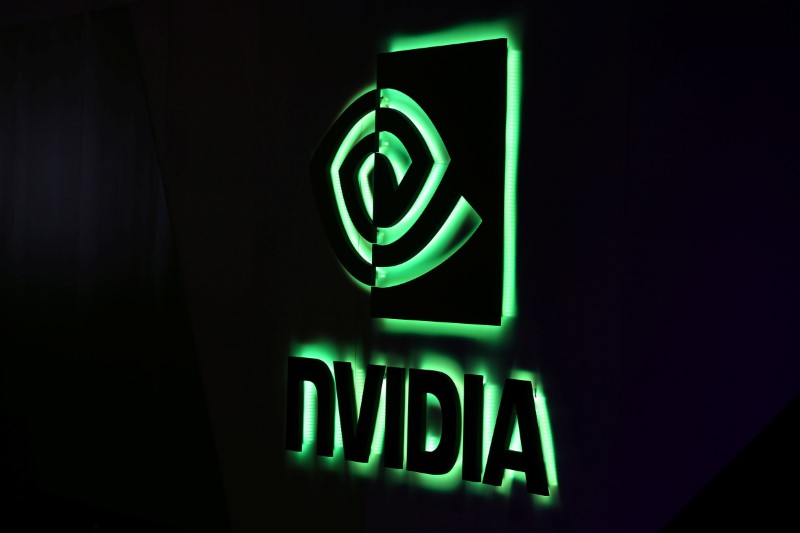JFrog stock rises as Cantor Fitzgerald maintains Overweight rating after strong Q2
SAN JOSE, Calif. - NVIDIA (NVDA), a semiconductor giant with a market capitalization of $2.84 trillion and a perfect Piotroski Score of 9 according to InvestingPro, has announced a significant advancement in computer-aided engineering (CAE) with its NVIDIA Blackwell platform, which accelerates simulation tools by up to 50 times. This enhancement is set to benefit industries including automotive, aerospace, energy, manufacturing, and life sciences by reducing product development time, cutting costs, and increasing design accuracy while maintaining energy efficiency.
The announcement, made at the GPU Technology Conference (GTC), highlighted that leading CAE software vendors such as Ansys, Altair, Cadence, Siemens, and Synopsys have already integrated the NVIDIA Blackwell platform into their simulation tools. This expansion comes as NVIDIA demonstrates remarkable financial performance, with revenue growth of 114.2% and an impressive return on assets of 82.2% in the last twelve months. These tools are further optimized with NVIDIA CUDA-X libraries and blueprints, enhancing real-time digital twins and reimagining the engineering process.
Jensen Huang, NVIDIA’s founder and CEO, stated that the future of product creation involves digital twins being developed before physical realization. He emphasized the transformative impact this technology will have on product development.
Cadence has utilized NVIDIA Grace Blackwell-accelerated systems to run multibillion cell simulations for the aerospace industry, significantly reducing the need for wind-tunnel testing and accelerating time to market. Anirudh Devgan, Cadence’s president and CEO, remarked on the productivity and quality improvements achieved through the NVIDIA Blackwell acceleration.
Synopsys, Ansys, and Altair CEOs also expressed the benefits their companies have experienced by incorporating NVIDIA Blackwell into their workflows, from tackling complex computational fluid dynamics challenges to enabling more design explorations.
Siemens has seen a reduction in development times and costs through the use of photo-realistic, interactive digital twins, according to Roland Busch, the company’s president and CEO.
Additionally, Rescale’s CAE Hub now offers access to NVIDIA technologies and CUDA-accelerated software in the cloud, powered by NVIDIA GPUs and NVIDIA DGX Cloud. Boom Supersonic is using this platform, along with NVIDIA Omniverse Blueprint for real-time digital twins, to design its new supersonic passenger jet.
The NVIDIA Omniverse Blueprint, which is now generally available, brings together NVIDIA CUDA-X libraries, NVIDIA PhysicsNeMo AI, and the NVIDIA Omniverse platform. This blueprint is aiding enterprises in external aerodynamics studies and other simulation-driven processes.
NVIDIA, recognized as a leader in accelerated computing, continues to drive innovation through its products and collaborations. The company’s advancements are detailed in the GTC keynote and sessions, which run through March 21.
This news is based on a press release statement and reflects NVIDIA’s current achievements and future directions in the realm of accelerated computing and digital twin technology. With a strong analyst consensus rating of 1.34 and trading near its Fair Value, NVIDIA continues to demonstrate robust financial health with an overall score of "GREAT" according to InvestingPro, which offers over 20 additional exclusive insights about NVIDIA’s financial outlook and market position. Investors can access comprehensive analysis through InvestingPro’s detailed research reports, available for over 1,400 US stocks including NVIDIA.
In other recent news, NVIDIA has launched the NVIDIA AI Data Platform, a new reference design aimed at enhancing enterprise storage with AI capabilities. This development integrates NVIDIA’s suite of products, including Blackwell GPUs and BlueField DPUs, to optimize AI processing, promising significant performance improvements. Concurrently, NVIDIA has expanded its Omniverse platform to boost industrial AI transformation, with major companies like General Motors and Unilever adopting the technology for various applications. Additionally, NVIDIA introduced the DGX SuperPOD, equipped with Blackwell Ultra GPUs, designed to provide advanced AI computing solutions across industries. This infrastructure is expected to significantly outperform previous systems, offering substantial increases in AI performance. The company also unveiled new AI models under the Cosmos platform, focusing on robotics and vehicle training, with industry players like Agility Robotics leveraging these models. Furthermore, NVIDIA has released the Llama Nemotron family of models to enhance AI reasoning capabilities, collaborating with companies such as Microsoft and SAP to integrate these models into their services. These recent developments highlight NVIDIA’s ongoing efforts to advance AI technology across various sectors.
This article was generated with the support of AI and reviewed by an editor. For more information see our T&C.
